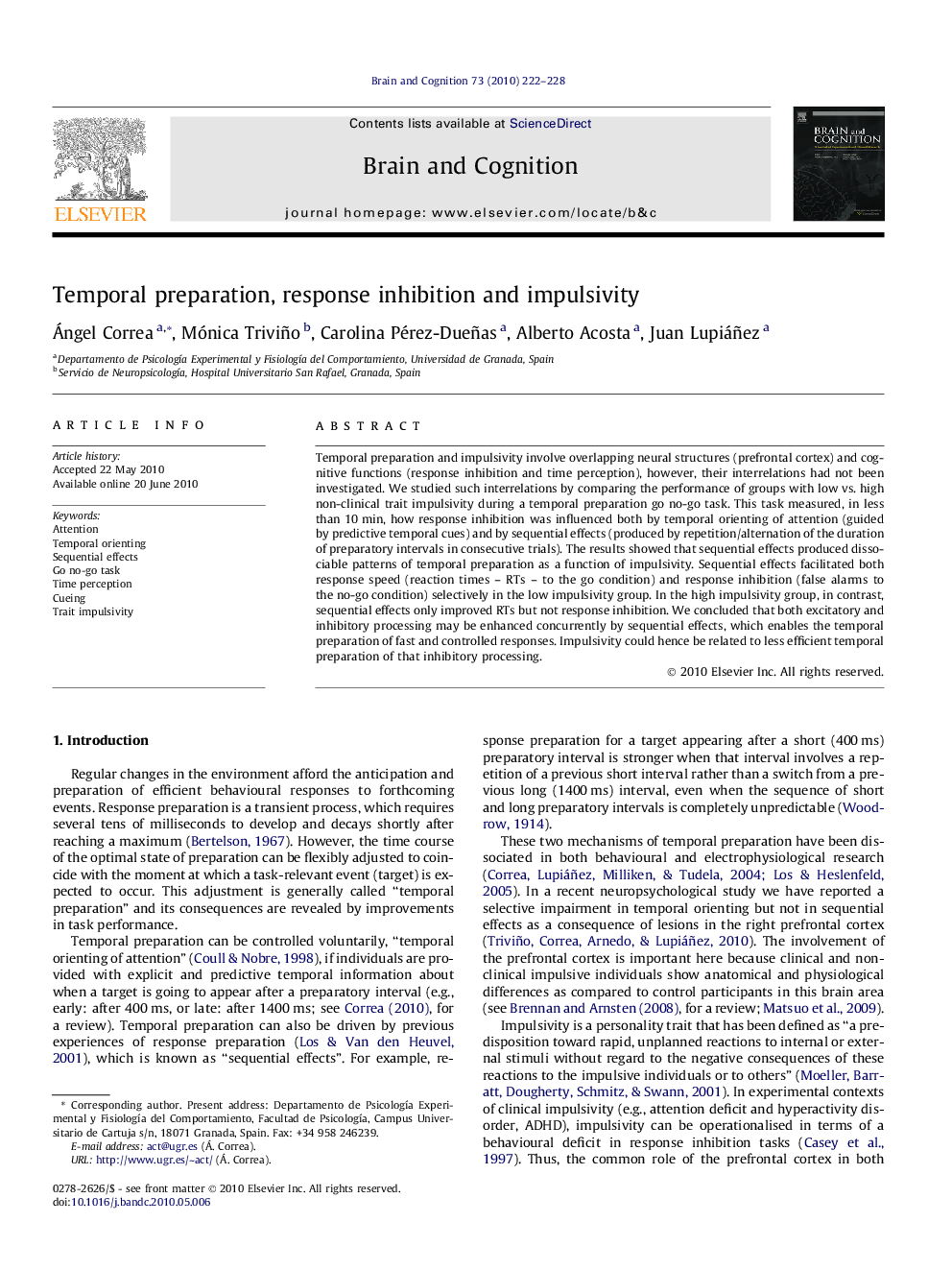| Article ID | Journal | Published Year | Pages | File Type |
|---|---|---|---|---|
| 924337 | Brain and Cognition | 2010 | 7 Pages |
Temporal preparation and impulsivity involve overlapping neural structures (prefrontal cortex) and cognitive functions (response inhibition and time perception), however, their interrelations had not been investigated. We studied such interrelations by comparing the performance of groups with low vs. high non-clinical trait impulsivity during a temporal preparation go no-go task. This task measured, in less than 10 min, how response inhibition was influenced both by temporal orienting of attention (guided by predictive temporal cues) and by sequential effects (produced by repetition/alternation of the duration of preparatory intervals in consecutive trials). The results showed that sequential effects produced dissociable patterns of temporal preparation as a function of impulsivity. Sequential effects facilitated both response speed (reaction times – RTs – to the go condition) and response inhibition (false alarms to the no-go condition) selectively in the low impulsivity group. In the high impulsivity group, in contrast, sequential effects only improved RTs but not response inhibition. We concluded that both excitatory and inhibitory processing may be enhanced concurrently by sequential effects, which enables the temporal preparation of fast and controlled responses. Impulsivity could hence be related to less efficient temporal preparation of that inhibitory processing.
